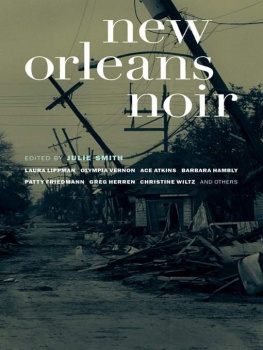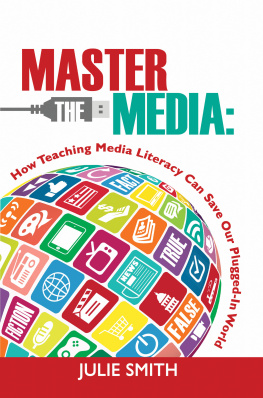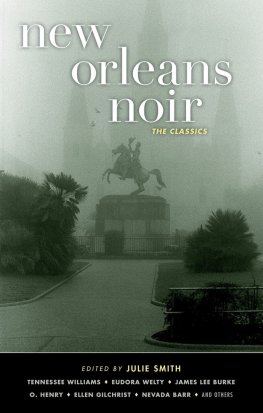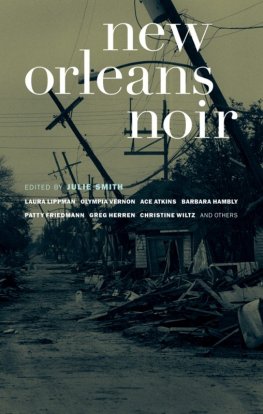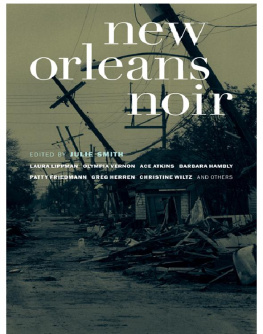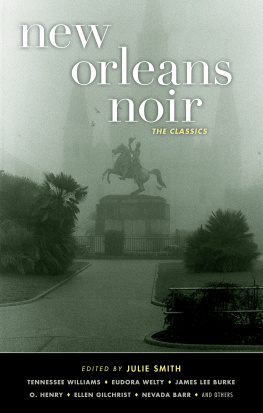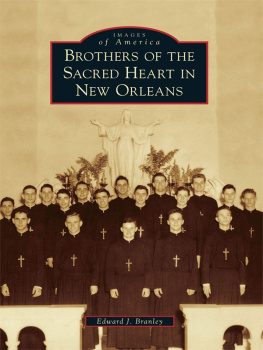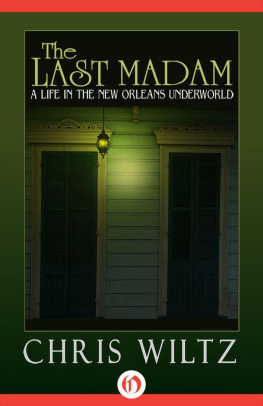Thanks have to begin withTim McLoughlin, who started the Akashic Noir Series with BrooklynNoir , and Johnny Temple, who's turned it into a cultural phenomenon; andthen move quickly to the seventeen brilliant authors who agreed to participatein this one. Working with all of you has been a joy.
Andso many others helped in so many ways: Laura Lippman, Vicky Bijur, David Simon,Denelle Cowart, Chris Wiltz, Greg Herren, David Spielman, Linda Buczek, JackWilloughby, Captain Jeff Winn, Paul Willis of the Tennessee Williams Festival,Ron Biava of the New Orleans Public Library, Lee Pryor, and especially MaryAlice Kier and Anna Cottle, who put some serious time in, just as a favor. My most heartfelt thanks to all. Plus a second thank you toJohnny Temple for so generously sharing in our recovery.
INTRODUCTION
Before Hurricane Katrina, NewOrleanians used to joke about not really being a part of America, being, infact, a tiny Third World country unto ourselves. And proudof it , we used to say.
Thelayers of irony in that idea become clearer--and more numerous--with each daythat passes since our city was inundated and, well ... pretty much leveled,except for the skinny strip along the river where we're all hunkered now. (Atleast those of us who aren't still trying to get home from Houston or haven'tpacked up and moved to North Carolina.)
TheBubble, we call it, or the Isle of Denial, but some days the denial justdoesn't work and neither does the Prozac, and we getall liquid in the eyeballs and have to pull ourselves together.
Littlemore than a year after the storm, we're still floundering, still in shock,still wondering how to write about such a momentous, life-changing, historic,downright biblical tragedy. We've lost so much that meant so much, and we'restruggling so desperately to hold onto what is left. How to convey something likethat?
LastChristmas, when we were all just barely home, just starting to get ourbearings, a librarian at Tulane University told me she'd already boughttwenty-five post-Katrina books for her library. "Nonfiction?" I asked.
"Ofcourse," she said.
Shemust be up to a hundred by now, but so far as I know, only one post-K novel hasbeen published at this writing. Though I have no doubt hundreds are in theworks Everyone is struggling to find a way to tell his or her story, to tell itin such a way that those who didn't go through this particular bewildering anddisorienting loss can understand how it relates to the larger picture, howuniversal a thing it really is, this destruction and this potential for destruction, this aching misery, this indifference on the part of the restof the country. Never have so many writers in such a small area become sopassionate, yet so desperate, all at the same time. We are at once immobilizedby the task and inflamed by it.
Soa short story is really the perfect way to stick a toe back in the water.Whether set pre- or post-K (these are the terms we use down here), the storiesherein, to my mind, are particularly passionate. Some of the post-K ones willsear your eyeballs. And yet ... so will some of the historic ones.
PattyFriedmann's tale of mean girls at an Uptown private school may well be the mostchilling story ever set at a kids' pajama party. The nineteenth-century yarn byBarbara Hambly and David Fulmer's "Algiers," set a century ago, provide ampleevidence that, so far as crime is concerned in this French city, plus ca change, plus c'est la meme chose . We've always hadour con artists, our gamblers, our two-bit hustlers, and, God knows, ourhookers and femmes fatales. We'd hardly be ourselves without them.
Alas,we also have our racists. Jervey Tervalon offers a peek into the discriminationof the past in his story of two wrangling priests, one a bigot and proud of it . Ted O'Brien also tackles the issue ofrace--with all its tangles and contradictions--in a twenty-first-century mixedneighborhood.
JamesNolan's wry and wicked "Open Mike" leads us on a careening tour of theunderside--both past and present--of that gaudy world known as the FrenchQuarter; the part the tourists haven't a clue about. Laura Lippman treats us toan insider's look at the Treme Mardi Gras, one of the city's most colorful,while providing so hair-raising a take on masking that it ventures into horrorterritory.
Beforereading Tim McLoughlin's worldly-wise Irish Channel story, be sure to pouryourself a couple of fingers of Irish whiskey. You'll need it--especially if younext move on to Olympia Vernon's unnerving tale of love gone wrong in theUniversity District.
TheLower Ninth Ward, perhaps our most famous neighborhood of late, was always atough place, but it had its tender side too, its neighborly, gentle, almostmaternal side, the side that makes people so desperate to go back no matterwhat--no matter that it mostly doesn't even exist anymore. Kalamu ya Salaamskillfully evokes the complexity of its residents' lives.
Notsurprisingly, almost half the writers chose to make their stories contemporary.And it's a good choice, I think. For this is what we live with now--this is thenew New Orleans. This messy, ugly, often violent, confusing,difficult, inconvenient, frustrating post-Katrina world.
In"Muddy Pond," Maureen Tan wades into a part of the city most of its black andwhite citizens are only vaguely aware of, and almost never visit--Village del'Est in New Orleans East, where the church called Mary Queen of Vietnam is thedominant social organization. Unless you count the gangs.
TheMasson boys in Thomas Adcock's "Lawyers' Tongues" are pure New Orleans--one aprosecutor, the other a petty thief. They're Gentilly folks who moved up from the nearby St. Bernard project under the watchful eyesof certain Aunt-tees only too eager to see them stumble.

